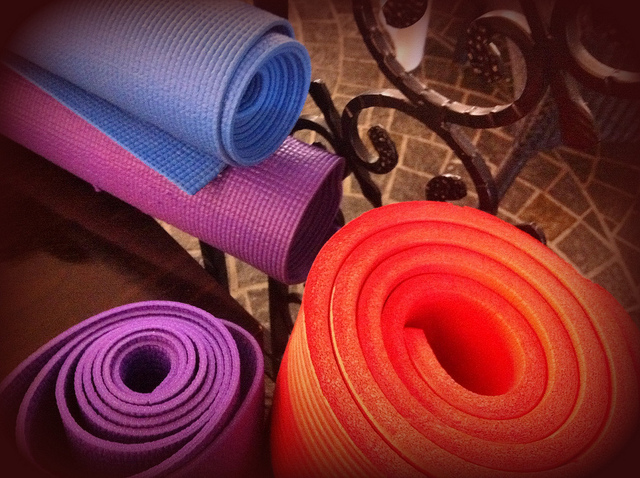The first of the five Niyamas, the moral virtues of yoga, is saucha, which means purity or cleanliness. As the saying goes, cleanliness is next to godliness, and holds a space for purity of the body and purity of the mind.
Running a yoga studio guided by all of the principles of yoga can be tricky. One simple way to encourage the Saucha niygama is to keep the studio clean. Your studio should be a place where the client’s mind is free to focus on meditation and relaxation without concern of getting sick. Yet, as yoga has became more popular, we see more infections spread through yoga facilities.
How germy?
Dr. Philip M. Tierno, author of “The Secret Life of Germs” says that,
“Eighty percent of disease is caught by direct or indirect contact—either interacting with a person who carries germs or touching a surface where those organisms live.”
This kind of contact is very common in studios where yoga is practiced.
A paper by the National Athletic Trainers’ Association (NATA) notes:
“skin infections in athletes are extremely common.”
Just as gyms have often been the location for unwanted viruses, fungi and bacteria, the same is true for yoga studios.  While many gyms have taken to offering up disinfecting spray for commonly used machinery, the same is not typical for yoga mats. In comparison, mats can even be filthier than an airline seat or cellphone.
While many gyms have taken to offering up disinfecting spray for commonly used machinery, the same is not typical for yoga mats. In comparison, mats can even be filthier than an airline seat or cellphone.
The millions of germs that lurk in a yoga studio can cause illnesses such as skin rashes, ringworm, athlete’s foot, or plantar warts. It’s even possible that antibiotic-resistant methicillin-resistant Staphylococcus aureus (MRSA) could be passed because more than 30 percent of people are silent carriers of the bacteria.
Avoid a contagious disaster
No establishment wants to be known as the place where someone got ill. Having a clean studio means everything to your reputation and your bottom line. After all, just as a diner likely will never return to a restaurant where the food made him ill, a client might very well stay away from yoga classes where he contracted something.
Keeping ahead of the game is important. Don’t wait until floors start looking dirty or locker rooms need to be tidied up. Be sure your studio has a routine in place to keep everything as clean as it can be. Have a daily, weekly, monthly and quarterly plan for various cleaning practices from wipe downs to professional disinfecting.
Preventive measures
Shoes
Many Ancient Eastern cultures observe the practice of removing shoes before entering the building. There’s a reason for this tradition: Saucha niyama! This simple effort can help keep the studio clean. Studies have shown that there is a lot of bacteria carried in on shoes.
Hand washing
Provide antibacterial soap in your bathroom or locker room and consider posting a sign as a reminder to clients about this practice. A good percentage of people do not wash their hands after using the bathroom. The Centers for Disease Control and Prevention states, “Keeping hands clean is one of the most important steps we can take to avoid getting sick and spreading germs to others.”
Wounds
Ask clients to keep open wounds, rashes or abrasions covered. Have bandages, hydrogen peroxide and a disinfectant like iodine on hand for those who need to tend to issues while at class.
Sickness
Encourage clients who have a fever or don’t feel well to stay home. Refunding the fee for the day or providing a pass for another class on another day helps encourage this practice. It’s better to institute this policy than run the risk of being the source of cold or flu outbreak.
Mats
Since the tiny holes in yoga mats are where germs like to hide, encourage private mat use. Provide information on where clients can purchase their own mat or stock some for sale at your facility. Remind them to clean their mat after every session.
If you have communal mats, clean each mat individually and after each use. Do not simply clean with soap and water. This will not kill germs. There are numerous yoga-equipment cleansers on the market, but a do-it-yourself solution of one part vinegar and three parts hot water works well. Over-the-counter disinfecting sprays like Lysol are also effective.
Remember, running a yoga studio includes creating an inviting atmosphere. Making sure your facility is clean not only provides a good impression, but lessens the risk of any infection being passed around.
Photo by kellinahandbasket

